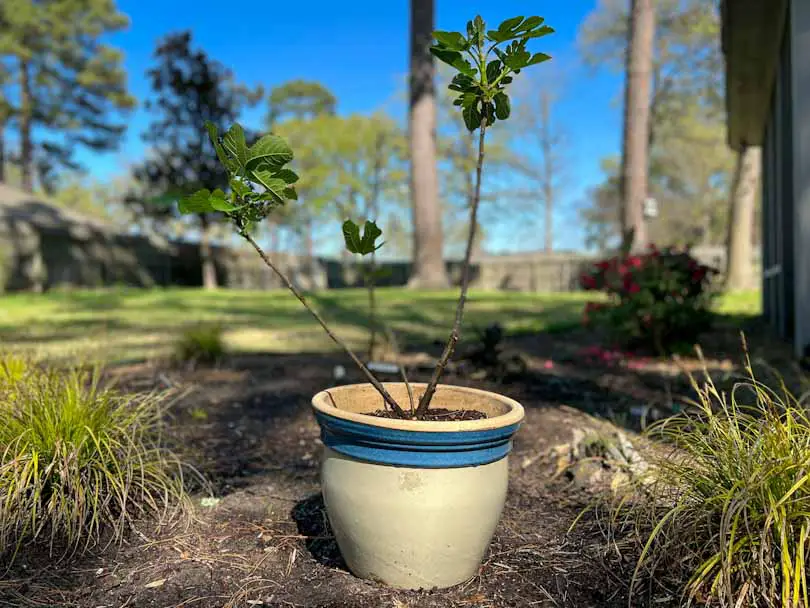
We may receive commissions from purchases made through links in this post, at no additional cost to you.
In an ideal world, we would all have the perfect climate, soil, and space to grow fig trees right in our backyards. But even if you can’t plant a fig tree in the ground – if your climate is too cold, or your soil too heavy – you can still get all the benefits from growing figs in containers.
I’m located in USDA zone 8b, so I’m able to grow a fig tree right in my garden. It loves my lean, sandy soil and hot climate, and I’m fortunate to get a great crop of fruit every year.
But I also love growing figs in pots. They’re ornamental, portable, compact, and productive. I can try more varieties than I can fit in my limited backyard “fruit grove” space. And best of all, potted figs are easy to plant and maintain.
For the best results, plant potted fig trees in a lightweight, portable container. Use a good quality soilless potting mix, place the pot in a sunny location, and water regularly. Potted figs benefit from regular fertilizing and minimal pruning, but need little additional care.
Growing fig trees in containers is easy and rewarding. Read on to learn exactly how to choose the right fig varieties, containers, and soil. I’ll give you step by step instructions on how to pot up and care for your tree. But first let’s look into why growing figs in pots works so well.
Why Grow an Edible Fig Tree in a Pot?
Few fruit trees grow as well as figs when planted in containers. You may even get an even better crop of fruit from a potted fig than one whose roots can spread endlessly throughout the garden. Figs love to have their roots restricted. A little bit of root stress causes the plant to want to reproduce – meaning more figs on the tree.
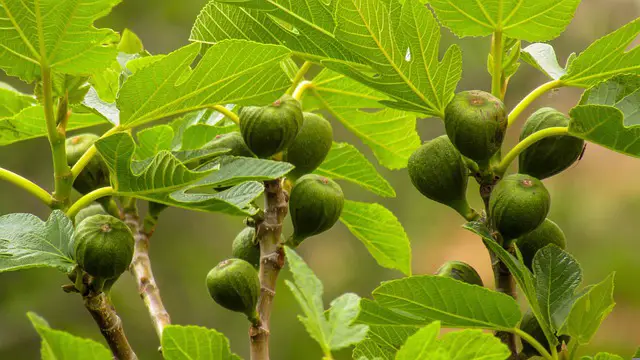
A big advantage of container-planted fig trees is winter protection. Most fig varieties are only hardy in USDA zones 7-10, so potting your fig tree allows those in cold climates (zone 6 and colder) to enjoy fresh home-grown figs, too. All you have to do is wheel the container into a protected location once the weather turns cold.
A fig tree grown in a pot will naturally stay more compact. There are many dwarf and semi-dwarf fig varieties, but really any fig tree can be grown in a container. The restriction of space and nutrients will keep the tree on the small side, no matter the cultivar.
Any fig tree is a highly ornamental plant – the sprawling, fan-like spread of branches, the dark green, highly lobed leaves. But there’s something about a potted fig tree that brings to mind exotic locations, like the fig’s native Mediterranean region. Who doesn’t want that on their patio or in the garden?
Still not sure if you should grow figs in a container or in the ground? I wrote an article that breaks down the pros and cons of both: Potted vs. In-Ground Fig Trees: Which is Better?
Get Set Up
Choose Your Fig Tree
The best fig cultivars for containers are those that stay naturally more compact. You can grow just about any fig variety in a container, but a larger fig tree may need to be pruned more regularly to restrict its size. Here are a few cultivars I recommend for container growing:
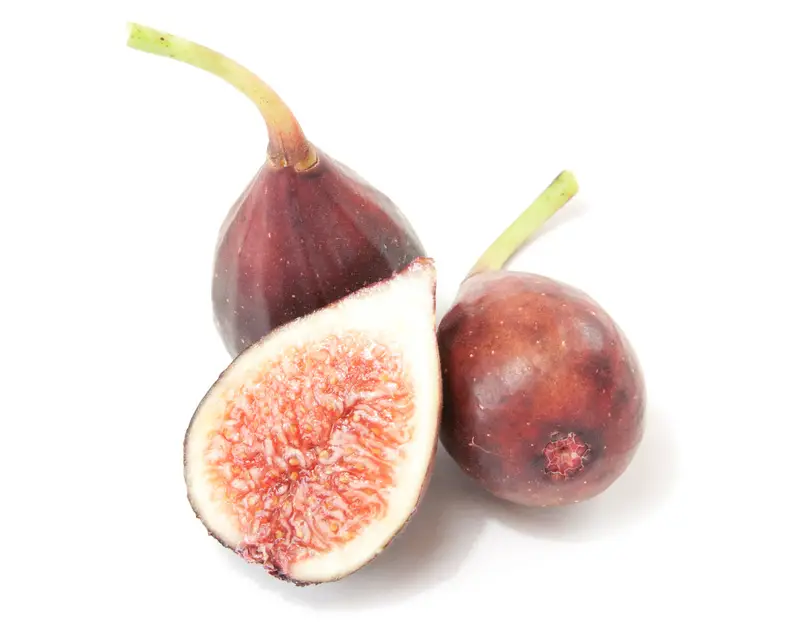
This article was originally published on thefruitgrove.com. If this content appears anywhere else, it has been stolen without permission from the copyright holder.
- ‘Petite Negri’ – This is a true dwarf fig tree, naturally growing to only 4 to 6 feet tall. It may begin producing medium-sized, purple-black fruits when it’s only a foot tall. ‘Petite Negri’ is a perfect choice when space is very limited.
- ‘Little Miss Figgy’ – In addition to having an amazing name, ‘Little Miss Figgy’ is another good choice for small pots. It will grow to be about 4 to 6 feet whether in the ground or in a container. Even when small, this variety is a heavy producer of sweet, dark burgundy figs.
- ‘Celeste’ – ‘Celeste’ is one of the most popular fig varieties to grow. It’s cold-tolerant, compact, and naturally disease and pest resistant. The figs have purple-brown skin and pink flesh and are very sweet.
- ‘LSU Gold’ – This is a cultivar that I grow in a pot. It produces a heavy crop of golden, honey-sweet figs. ‘LSU Gold’ was bred to withstand the heat and humidity of southern climates.
For even more potted fig recommendations, check out: 14 Fantastic Figs for Growing in Containers.
Choose Your Container
Whichever variety you plant, an ideal pot is one that is just an inch or two larger than the root ball on all sides. You want a little room for the roots to continue growing, but not so much space that the roots are “swimming” in soil. Check your pot’s size by placing the nursery-potted tree inside to see if the container is too large or too small.
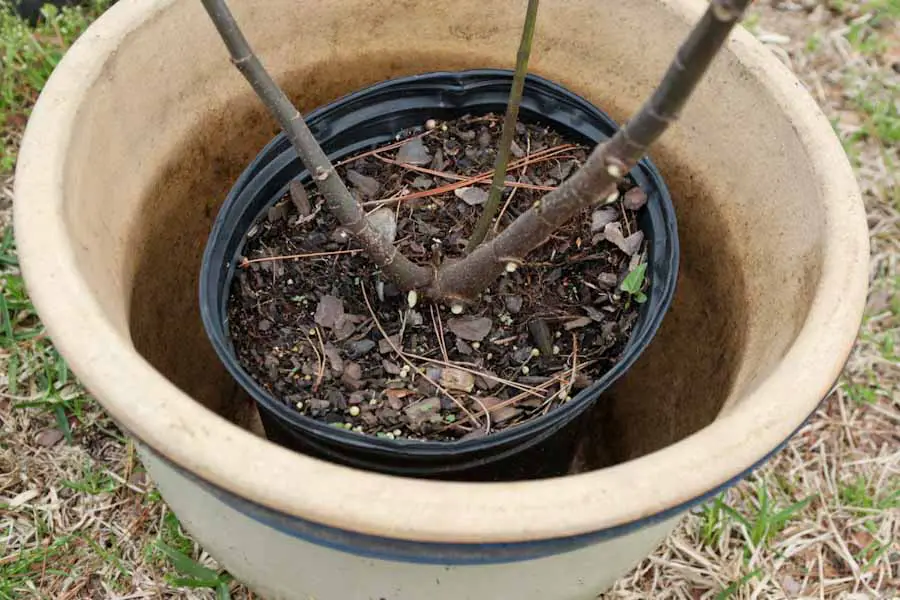
The material of the pot doesn’t matter – clay, porcelain, plastic, or even wood are all good choices. The main consideration is weight – if you plan to move your pot at all, choose a container that isn’t too heavy or bulky.
As the tree grows, you’ll need to pot up to a larger sized container. A half whiskey barrel is a good choice for a larger, fully-matured fig tree. Consider placing the pot on a heavy-duty wheeled plant stand like this one so it’s easy to move around.
Be sure the container you choose has drainage holes in the bottom. Figs need well-draining soil – they hate to be waterlogged. If the pot has inadequate drainage, the fig may develop root rot, which is often fatal to the plant.
Finally, make sure your pot is very clean. If there was another plant grown in the container previously, thoroughly scrub the pot to remove any dirt or debris. Fungal spores, bacteria, or pests left in old dirt residue can transfer to the new plant .
Choose Your Potting Mix
Use a soilless potting medium when planting fig trees in containers. Soilless mixes contain a variety of ingredients such as peat moss, pine bark, perlite or vermiculite, composted manure, and fertilizers.
It’s important to not use garden soil when potting any fruit tree. Soil from the garden can introduce pests, diseases, and weeds to the pot, which can be very difficult to get rid of. Fig tree roots are prone to nematodes, so the best way to ensure healthy root development is with a good potting mix.
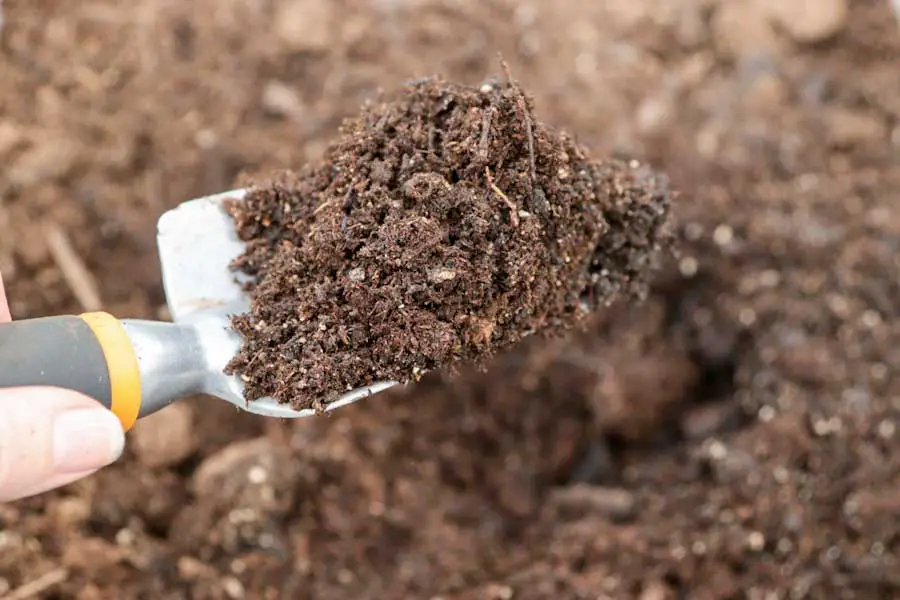
The best potting mix for a fig tree is one that is lightweight and aerated. If the soil is too rich, the plant may produce an excess of leafy growth and fewer fruits.
I share my recipe for the perfect fig tree potting mix in this article: The Best Potting Soil for Fig Trees (Plus How to Make It)
One commercially available mix that I highly recommend is the Fox Farm Ocean Forest Potting Soil. It’s a light mix that has tons of beneficial ingredients, and its pH is adjusted to be slightly acidic, which is perfect for fig trees. I like to mix this with 1/3 pine bark fines to help with drainage.
When I potted my ‘LSU Gold’ fig, I decided to make my own potting mix. A DIY potting mix is inexpensive and endlessly adjustable, depending on what you’re planting. Below is a video explaining exactly how I put together an all-purpose potting mix that’s great for fig trees.
Step-by-Step: Planting a Potted Fig Tree
Step 1: Remove the tree from its nursery pot. Once you’ve chosen the right-sized container and have your potting mix ready to go, gently remove the tree from its pot. Hold the base of the trunk, tilt it, and ease the root ball out of the pot. If the pot is stuck, you can carefully cut away the plastic nursery pot from the roots with some heavy duty scissors.
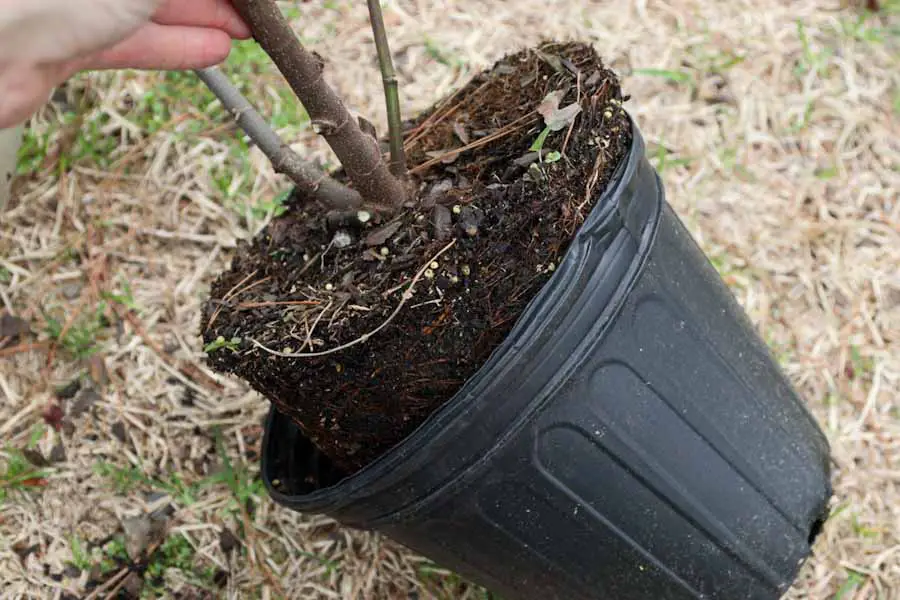
Step 2: Gently tease the roots of the tree. With your fingers, loosen up the roots all around the sides and bottom of the root ball.
Step 3: Put a layer of potting mix in the base of the pot. If desired, you can cover the drainage holes with some large rocks or broken pieces of pottery. Check the pot’s depth by placing the tree inside. The top of the root ball should be 1 to 2 inches from the rim of the pot. Fill the bottom of the pot with potting mix to the correct height.
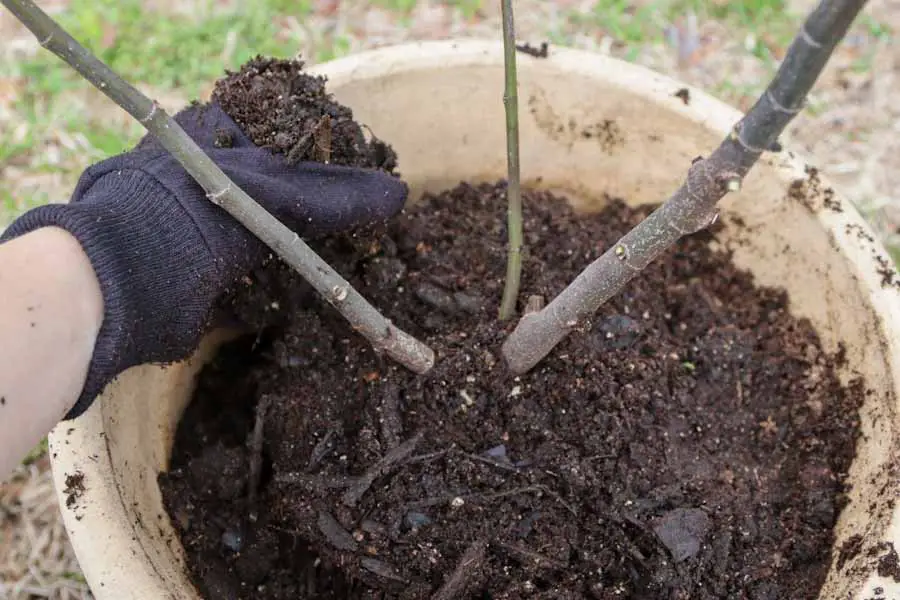
Step 4: Place the tree in the pot, then fill with potting mix. Once the tree is in place, use a trowel or your hands to fill the empty spaces around the root ball with potting mix. Tamp down the soil as you go to remove air pockets. Leave 1 to 2 inches of space between the top of the soil and the rim of the pot.
Step 5: Water the tree thoroughly. Give your newly potted tree a good soak, then move it to it’s final location (if not already there).
Caring for Potted Fig Trees
Location
For the best possible crop of figs, place your potted tree in a spot that gets at least 6 hours of direct sun per day. In cooler climates, place the tree near a fence or wall to take advantage of reflected heat. In hot climates, provide a little late afternoon shade during the intense summer heat.
Once temperatures get close to freezing, move the fig tree to a sheltered but unheated location. An unheated garage or shed is ideal. In most climates, fig trees are deciduous and will go dormant over the winter.
As the weather warms up in early spring, gradually re-acclimate the tree by bringing it outside a few hours per day for a few days. Then move it to it’s summer location once the threat of freezing has passed.
Water
Potted fig trees need regular, deep watering, especially in hot weather. A good rule of thumb is to water the tree when the top inch or so of soil is dry. I like to stick my finger in the soil – if it’s dry up to the second knuckle, then I know it’s time to water.
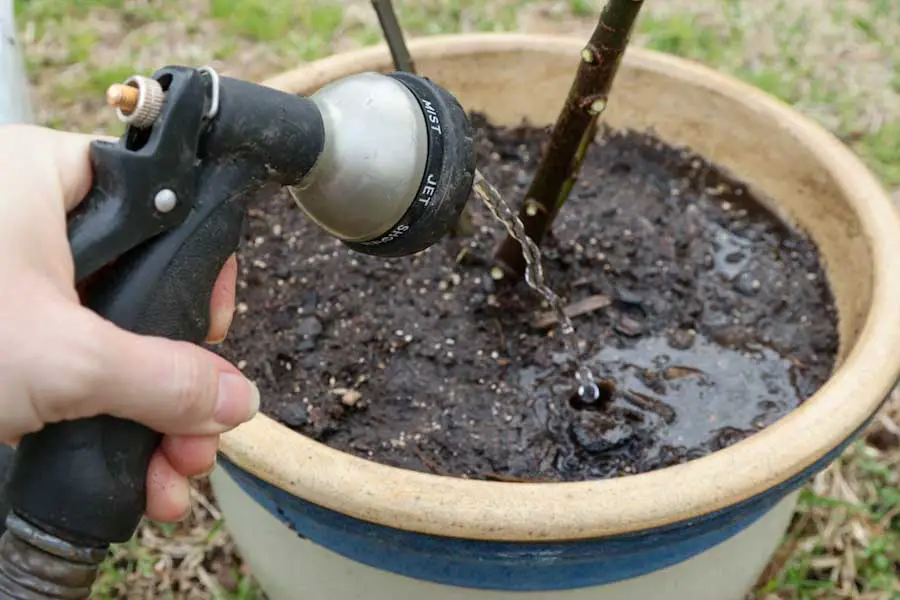
Water minimally while the tree is dormant. During the fruiting season, regular watering will ensure that the fruit develops to full size. Underwatering (or overwatering) may cause the figs to drop off the tree prematurely.
In hot climates, potted figs may need watering once or twice per day. Place a layer of mulch on top of the pot to insulate the roots and prevent too much moisture evaporation.
Pruning
Potted fig trees need minimal pruning. If you are growing a large fig tree cultivar in a container, such as ‘Brown Turkey’, you may need to prune a little more to control the size.
In general, concentrate on removing any damaged or diseased branches. Young fig trees can be pruned to have one central trunk or multiple main trunks, depending on your preference. But once the overall shape is established, the tree shouldn’t need too much trimming.
Once you notice four or five new leaves at the ends of branches in spring, you can pinch off any new growth that follows. Some growers suggest that this can increase fruit production. I, personally, have not found it necessary to pinch off new growth, as long as I haven’t over-fertilized my potted figs.
Fertilizer
Fertilize potted fig trees about once a month during the growing season. Although I generally favor slow-release, organic granular fertilizers, soluble fertilizers actually work best for potted figs. A water-soluble fertilizer doesn’t need to be broken down by microorganisms in the soil like an organic fertilizer does.
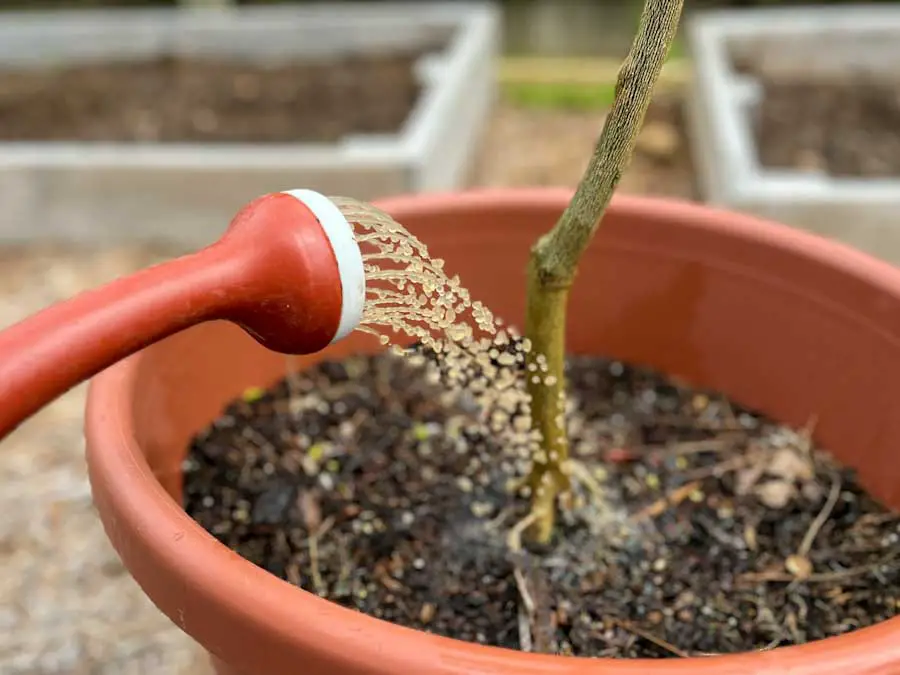
I like to feed my potted figs with a balanced or slightly potassium-heavy (the “P” in the “NPK” numbers on the package) liquid fertilizer once per month, such as this Miracle-Gro Performance Organics Blooms fertilizer. I also use a diluted liquid fish emulsion, like this one. It doesn’t smell great, but it’s kind of like giving your tree a multivitamin.
When in doubt, err on the side of less fertilizer rather than more. An over-fertilized fig tree will produce an abundance of leaves and not many figs.
For more help, I give a full breakdown of fig tree fertilizing in When to Fertilize Fig Trees: A Complete Guide.

